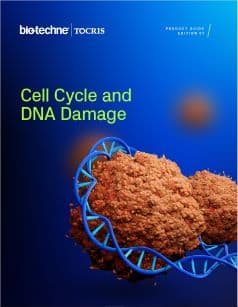PERK
PKR-like ER kinase (PERK, EIF2AK3) is an elF2α kinase that inhibits protein translation. PERK is a type one endoplasmic reticulum (ER) membrane protein which is involved in both the integrated stress response (ISR) and unfolded protein response (UPR).
PERK Inhibitors |
|
|---|---|
| Cat. No. | 产品名称/活性 |
| 5517 | AMG PERK 44 |
| Potent and selective PERK inhibitor; orally bioavailable | |
| 5107 | GSK 2606414 |
| Potent and selective PERK inhibitor; orally bioavailable | |
Other |
|
| Cat. No. | 产品名称/活性 |
| 5284 | trans-ISRIB |
| Integrated stress response (ISR) inhibitor | |
PKR-like ER kinase (PERK, EIF2AK3), EC 2.7.11.1, is a eukaryotic initiation factor 2α (elF2α) kinase that inhibits protein translation and is important in the endoplasmic reticulum (ER) stress response. PERK is localized to the ER and contains a stress-sensing domain that faces the ER lumen, a transmembrane segment, and a cytosolic kinase domain.
PERK plays an integral role in the unfolded protein response (UPR) and integrated stress response (ISR). The UPR and ISR are activated by a build-up of unfolded proteins in the ER and increase in cellular stressors such as hypoxia, respectively. Induction of these pathways activates PERK by inducing the dissociation of ER chaperones from the stress-sensing domain, resulting in PERK oligomerization and autophosphorylation. Upon activation PERK phosphorylates and inactivates eIF2α, which leads to a global reduction in protein synthesis. As well as suppressing global protein translation, the PERK-dependent inhibition of eIF2α also results in the upregulation of stress-response genes such as ATF4 and the pro-apoptotic protein CHOP (GADD153). This allows the build-up of unfolded proteins to be efficiently processed and promote cell survival during periods of cell stress.
PERK is a useful target for studying diseases associated with UPR and ISR dysfunction. ER stress, hypoxia and aberrant proteins synthesis are all important factors in many major disease states such as cancer, neurodegeneration and diabetes. PERK inhibition has been shown to induce apoptosis and autophagy pathways, therefore PERK inhibitors are potentially useful therapeutic tools for the inhibition of tumorigenesis.
External sources of pharmacological information for PERK :
Literature for PERK
Tocris offers the following scientific literature for PERK to showcase our products. We invite you to request* your copy today!
*Please note that Tocris will only send literature to established scientific business / institute addresses.
Cell Cycle and DNA Damage Research Product Guide
This product guide provides a review of the cell cycle and DNA damage research area and lists over 150 products, including research tools for:
- Cell Cycle and Mitosis
- DNA Damage Repair
- Targeted Protein Degradation
- Ubiquitin Proteasome Pathway
- Chemotherapy Targets
